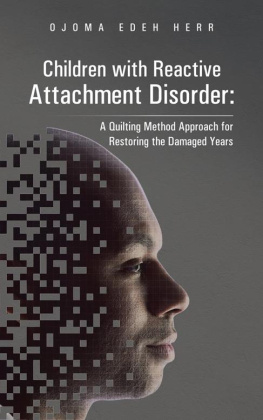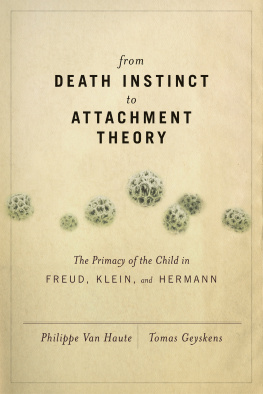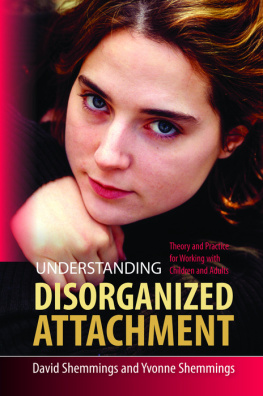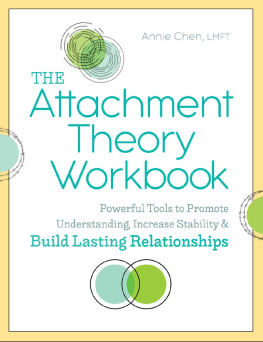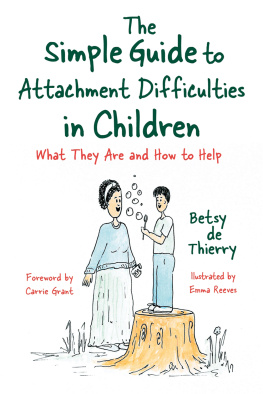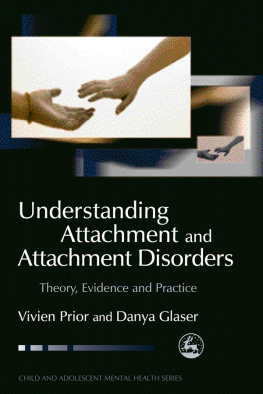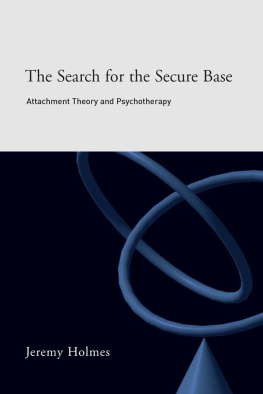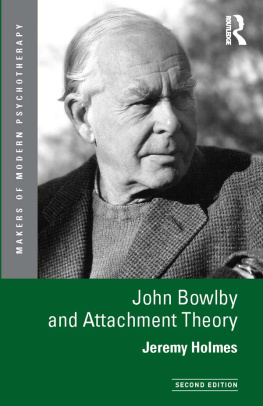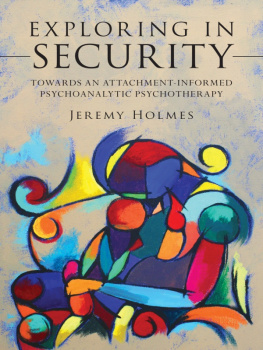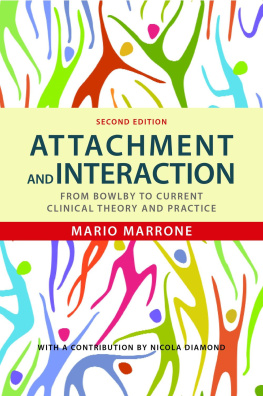Understanding Disorganized Attachment
Theory and Practice for Working with Children and Adults
David Shemmings and Yvonne Shemmings
Jessica Kingsley Publishers
London and Philadelphia
Extracts from Out et al. 2009 on pp.4749 and pp.167169 are reproduced by permission of Taylor & Francis Group, www.informaworld.com.
Figure 2.1 from Madigan et al. 2006 on p.60 is reproduced by permission of Taylor & Francis Group.
Extract from Hesse and Main 2006 on p.79 is reproduced by permission of Cambridge University Press.
Figure 5.1 from George and West 2001 on p.111 is reproduced by permission of Taylor & Francis Group.
First published in 2011
by Jessica Kingsley Publishers
116 Pentonville Road
London N1 9JB, UK
and
400 Market Street, Suite 400
Philadelphia, PA 19106, USA
www.jkp.com
Copyright David Shemmings and Yvonne Shemmings 2011
All rights reserved. No part of this publication may be reproduced in any material form (including photocopying or storing it in any medium by electronic means and whether or not transiently or incidentally to some other use of this publication) without the written permission of the copyright owner except in accordance with the provisions of the Copyright, Designs and Patents Act 1988 or under the terms of a licence issued by the Copyright Licensing Agency Ltd, Saffron House, 610 Kirby Street, London EC1N 8TS. Applications for the copyright owners written permission to reproduce any part of this publication should be addressed to the publisher.
Warning: The doing of an unauthorized act in relation to a copyright work may result in both a civil claim for damages and criminal prosecution.
Library of Congress Cataloging in Publication Data
Shemmings, David.
Understanding disorganized attachment : theory and practice for working with
children and adults / David Shemmings and Yvonne Shemmings.
p. cm.
Includes bibliographical references and index.
ISBN 978-1-84905-044-9 (alk. paper)
1. Attachment disorder. 2. Attachment behavior. I. Shemmings, Yvonne. II.
Title.
RC455.4.A84S54 2011
616.8588--dc22
2010038817
British Library Cataloguing in Publication Data
A CIP catalogue record for this book is available from the British Library
ISBN 978 1 84905 044 9
eISBN 978 0 85700 241 9
Converted to eBook by EasyEPUB
To the hundreds of social workers and child protection professionals who help protect thousands of children
Acknowledgements
We thank David Phillips, David Wilkins and Tania Young, not just for contributing to the book but for their expertise in helping to translate theory and research on disorganized attachment into practice with children and families. We also want to pay tribute to the social workers and their team leaders in the London boroughs of Enfield, Merton, Lewisham and Tower Hamlets who have been piloting the ADAM Project. Finally, we must thank Denise Tucker for her expertise and diligence in completing the index for the book.
Introduction
You are in a park, just watching the world go by. Two young boys, who dont know each other and have never met before, have been taken to the park for the afternoon by their fathers. They are playing near each other on the swings and slides, in an enclosed space. Their fathers, who also dont know each other, start to chat and then tell their sons to be good boys while they quickly go and get a coffee from a stall round the corner, just out of sight of their sons (but the fathers can still see them). Suddenly a dog appears in the enclosure and starts barking. The two dads hear the commotion and run back. You notice that each toddler reacts very differently. The first child, clearly frightened and starting to cry, turns and runs towards his father, who has already moved towards his son and immediately picks him up and soothes him. After some reassurance from his father, the boy is looking back at the dog with renewed interest and excitement at the prospect of playing with it. The second boys reaction is markedly different: he turns to his fatherbut as soon as he sees him, he stops in his tracks and looks down. His behaviour changes noticeably: his legs have frozen to the ground, his arms rise as if in slow motion and his hands turn slowly to his face, but never quite cover it.
The first child showed organized attachment behaviour in his reaction to the dog: naturally, he is scared and so turns to a protective figure who comforts and reassures him, thus enabling his son to carry on being captivated and excited by the dog. The second child exhibited the signs of disorganized attachment behaviour. For a variety of reasons, he cannot use his father as an attachment figure most typically because, either consciously or unconsciously, his parenting style is abusively harsh or emotionally cold and helpless. The result is that the child is caught between Scylla and Charybdis, the rock and a hard place of Greek legend: he is terrified simultaneously by the dog and his father; he is frightened by what should be his haven of safety; he experiences what Mary Main called fear without solution (Main and Solomon 1990). Frightened in the park, the second boys father should have offered the solution to the childs terror; instead, his dread of his own father leads to an unsolvable dilemma I need to go to my dad because Im scared of the dog, but I cant because my dad frightens me too. Far from being a protective figure, the boys father is a source of danger. The child is truly in harms waybut there are two harms, one of them a person who is supposed to be his protector from harm.
This kind of behaviour was reported by the Observer newspaper (16 August 2009) to have been noticed by the grandmother of Peter Connelly (Baby P). Three adults were convicted of unlawfully killing the 17-month-old child and this was a brutal case of child abuse that hit the headlines of the British press during 2009. It was one of the reasons that led us to write this book. The grandmother said that the toddler would become terrified screaming and crawling (as we shall see, another well-documented sign of disorganized attachment behaviour) when one of the men entered the room. The childs mother commented that he often did this, because he was frightened of tall people. Peters behaviour could be seen as a possible indicator of disorganized attachment, especially if the situation the child was in when the man entered the room also contained a level of distress. (None of the police officers, social workers or health professionals, who between them made over 60 visits, were aware of the presence of either male, as they both hid whenever anyone came to the house.)
What we are describing are situations when a childs attachment system is activated, but not terminated. Given the options of fight, flight or freeze, the childs brain selects the latter as the least worst option. But the immediate solution of shutting down is now known to carry with it serious consequences. The motionless exterior is a faade masking a complex biochemical and neurological process: on the outside all seems calm, but on the inside there is turbulence. In the short to medium term, significant changes in the bodys biochemistry take place when stress remains high and unregulated. This produces hormone imbalances which, in turn, directly impede or alter neurological structures and connections. Toxic, unremitting stress literally changes the way the brain develops and the way the mind makes sense of relationships. In the long term, there is a significant risk of mental ill-health resulting from the chronic struggle to form mutually satisfying relationships with others, emanating from a deeply distorted view of oneself as entirely unlovable and unworthy of affection. Because the brain is a pattern-recognizing organism, familiar and predictable pathways are always selected, even if they are sometimes not optimal for the childs development.


